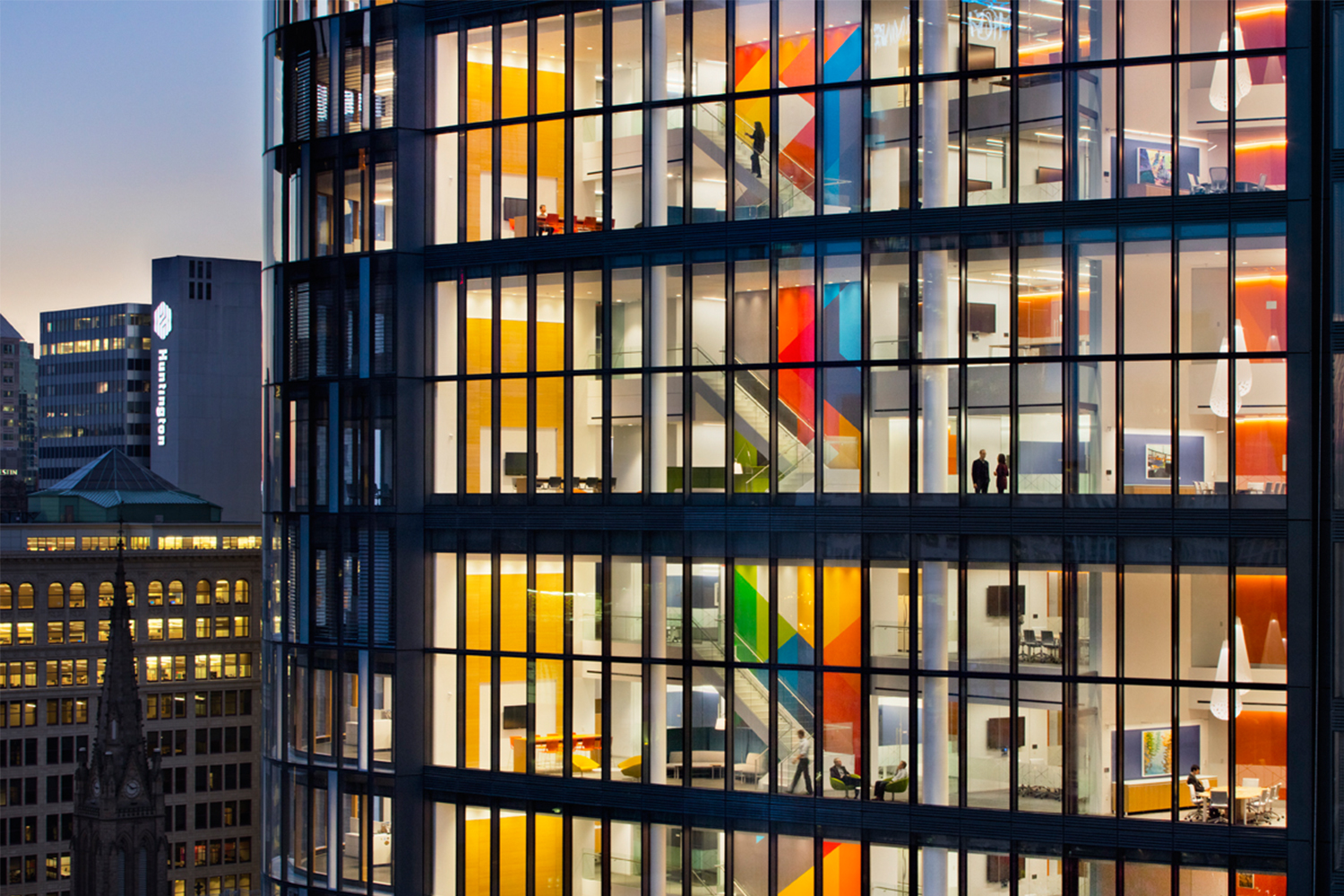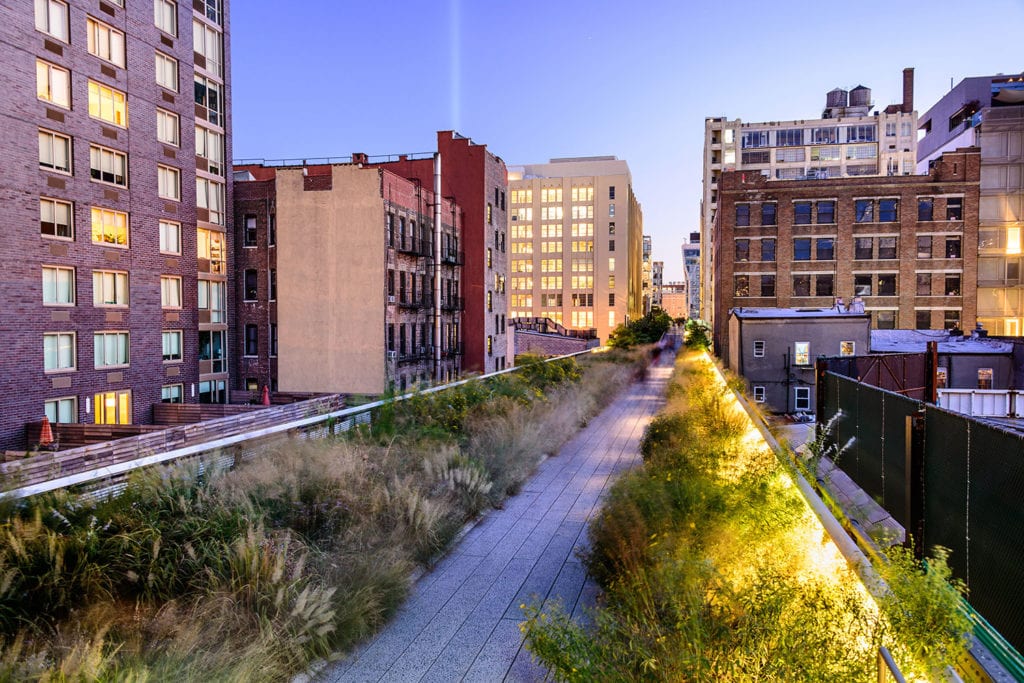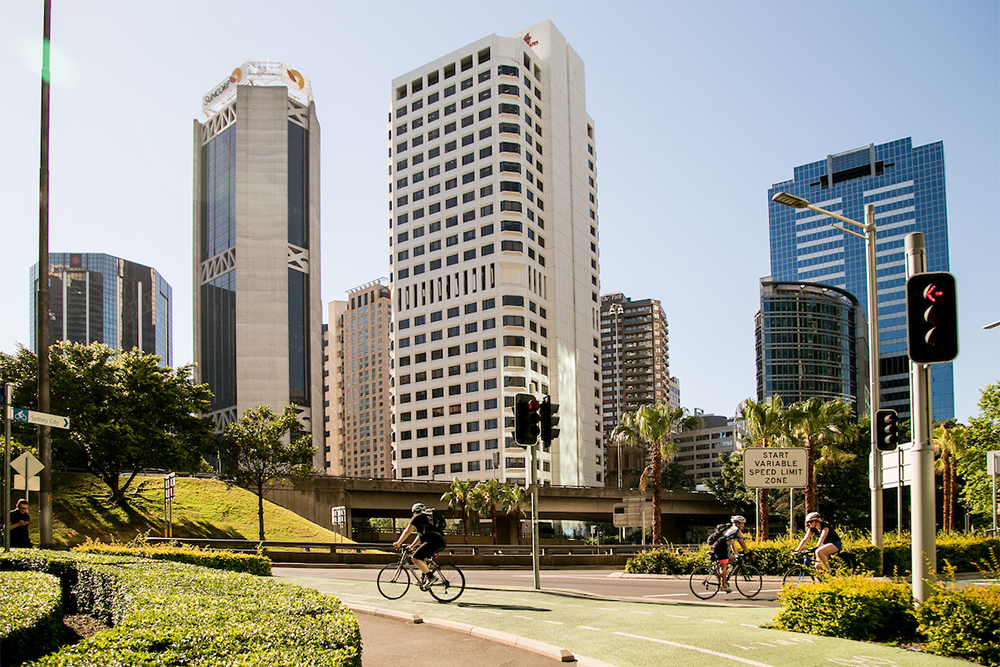Buro Happold and the global climate emergency
Can engineers really make a difference as we combat the burgeoning worldwide climate emergency? Without a doubt says Duncan Price, Buro Happold’s Director of Sustainability.
What is a climate emergency? It is a recognition of the need to rapidly scale up and accelerate action on climate change. In 2018, the UN Intergovernmental Panel on Climate Change released a report saying that we have 12 years left to abate the acceleration of climate change, to “bend the curve”, as they say. The Committee on Climate Change also identified that there was a need to set targets for net zero carbon in the UK.

The UK is already one degree warmer than it was in pre-industrial times. We are halfway towards the two-degree maximum rise agreed in Paris in 2015, and two-thirds from the 1.5-degree aspirational target. The UK has now recognised those targets and adopted the recommendations by the Committee on Climate Change that commit us to being on a trajectory for net zero greenhouse gas emissions by 2050.
CO2 has been a big part of this but there is also unsustainable resource consumption and pollution. There are many driving forces behind that, but the use of resources and pollution of the biosphere, oceans and soil have been manifest. It is phenomenal – sixty per cent of species have disappeared or become extinct since 1970. This has been driven by a population that is not only significant but also increasingly urbanised.
As a practice, Buro Happold has both a responsibility and an opportunity to make a significant positive difference to the world. We have many of the tools in the box required to identify, analyse and resolve complex system challenges – we can provide evidence that gives decision-makers confidence to act. For example, we developed the evidence base for energy efficiency targets that apply to all new major developments in London. We were able to do that because we have a deep understanding of what it takes to design and operate buildings. We also understand the energy flows in different building types.
Right from the genesis of our organisation, low carbon and energy efficiency have been key themes in the philosophy of how Buro Happold designs solutions for buildings and cities. We are members of the Aldersgate Group, which is a multi-sector leadership alliance advocating for strong policies on climate change. Through that group, we have been lobbying for government action in this area. We also have been working within the sector, in particular with the UK Green Building Council, to get the property development and building side in a similar space.
In simple terms, what we are trying to do is decarbonise the whole of the built environment. That means improving the energy efficiency of our buildings, then enabling those buildings to use clean, renewable energy imported through either the electricity grid or another energy distribution system, such as a district heating. Not every building will be able to have renewable energy, so we will probably have some electricity coming from the National Grid; by 2050 we expect that it will predominantly be a zero-carbon grid.
It is good to unpack sustainability into different components, different ways of thinking. Essentially, it is about projects where both people and planet can thrive.
Duncan Price, Director of Sustainability
By joining up this agenda across disciplines, we have found new ways of thinking. This includes the work that we have been doing with C40 Cities, which is looking at the air quality, health and economic benefits of urban climate action. That has yielded new methodologies, new insights, new ways of thinking about projects. This helps lift the aspirations and confidence of city decision makers enacting policies, which may not have happened before, and that may be scaled up as a result of what we are doing. I am really excited by that. I see this is as an interesting way of capturing the imagination of 1,800 brilliant Buro Happold engineers and consultants that see a greater purpose in what they are doing and love a challenge. We have given them a clear challenge on which to apply their creativity and problem-solving abilities. Their desire to network and do that in a much more integrated way helps us to attract, retain and nurture the very best talent.
It is good to unpack sustainability into different components, different ways of thinking. Essentially, it is about projects where both people and planet can thrive. It is important to bring some numbers to that too. So, is it zero carbon? Is it clean air? Is it going to provide comfort in 2050? Is it efficient? Bringing in some science and making sure that the projects we are working on are helping us towards that overall objective are ways of giving substance to the concept of sustainability. The idea originally stems from the Rio Earth Summit of 1992. They coined this phrase “sustainable development”, which is development that meets the needs of today without prejudicing the needs of future generations to do the same. That necessitates working within the ecological limits of the planet and meeting the needs of society at the same time. So, making sure that we are not consuming resources at a rate that is faster than the world’s ability to replenish them.

We know from the research that C40 Cities has done that around 40% of the Paris Agreement on climate change can be delivered through action in cities and towns, the urban environment. Many of our clients are in the process of declaring their own climate emergencies and setting ambitious targets to scale up and accelerate action on climate change. It was in this context that Buro Happold declared our own climate emergency and we are encouraging others in the industry to do the same.
Spearheading the adoption of climate and biodiversity emergency declarations among our peer group is absolutely the right thing to do. This transcends any individual business need. However, we are aligning our whole business to this agenda, so if we can get our clients and peers pointing in the same direction it will lead to new opportunities and de-couple economic success from negative impact. We want to align business success with positive social and environmental outcomes. This is the trajectory that we intend to pursue.
At a macroeconomic level, investment in building energy efficiency makes a lot of sense; it is good for jobs, good for skills innovation and it reduces imports of gas. The economic multiplier that comes from energy efficiency is better than almost any other infrastructure project. It just makes good sense. Think of it as an investment rather than a cost. The benefits are enormous.

The Tower at PNC Plaza (Pittsburgh, PA) is a Buro Happold project that combines cutting-edge design with the very latest green technology to exceed LEED Platinum criteria. Image: Connie Zhou
It is not just about the design of new buildings; operation and improvement of existing building stock is absolutely critical too. Now, buildings are important for people – they affect our health, happiness and productivity – but they also have a strategic importance in the fight against climate change. The buildings we are designing now have to be fit for the future and be able to withstand warmer climates.
If we are to meet our targets, then we need to fundamentally change the way that we live. That means being aware of the impact that we have. Who doesn’t want clean air and communities where people thrive in close proximity? To accomplish that, we need to think about where and how we live and work, how we move and the way that we engage with our towns and cities.
National governments and international organisations have set the direction of travel, but the action needs to happen at a regional level. UK government had its own Climate Change Act, which is arguing for an 80% reduction before 2050; local authorities have declared climate emergencies in recognition of the fact that the UK government wasn’t reacting fast enough. We need to respond to the science, and the science tells us that we need to be moving quicker.
There are huge challenges to face. However, I feel like we are at a tipping point in public consciousness. That has occurred alongside action from governments, cities, businesses and civic society all coming together at the same time. In the last year there has been an alignment of international recognition through the IPCC, national recognition through the Committee on Climate Change and the UK government, and we’ve had corporates – many of our private sector clients and public sector clients, such as city authorities – all saying, “Yes, we need to adopt science-based targets, we need to be recognising that there is a requirement of all sectors of the economy and all actors to move in unison”. There’s a political space that’s been opened up by the school climate strikes and Extinction Rebellion mass movements; the groundswell of public opinion has given politicians the confidence to act. I have never seen this happen before, that mixture of top-down and bottom-up. That creates opportunities for new services, new ways of living and new ways of working that, I think, will be better. I am cautiously optimistic.
It takes strong leadership and we are part of a system that needs to change, but, as engineers, we have a very influential voice. We bring science, evidence, and rigour, but we also design spaces that affect people so we have a strong understanding of that relationship between built assets that consume energy and the quality of the experience that this energy produces. We can engineer the whole system; we can design whole towns, cities and buildings for cleaner, healthier, more productive lifestyles that are also resilient for the future.
As engineers, we have the skills to make a considerable positive impact on the world. This is exactly the right time to be applying those skills.

Two St. Peter’s Square (Manchester, UK) is another of our sustainable buildings, mixing retail capacity with BREEAM Excellent, Grade A Energy Performance Certificate (EPC) office space. Image: Buro Happold
You can find out more about our Zero Carbon Cornwall workshop below:



